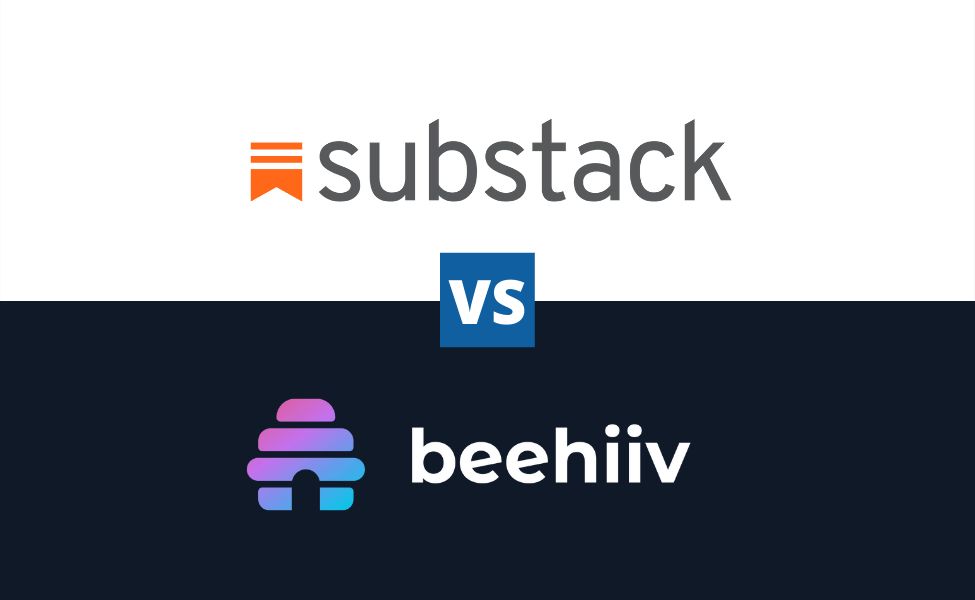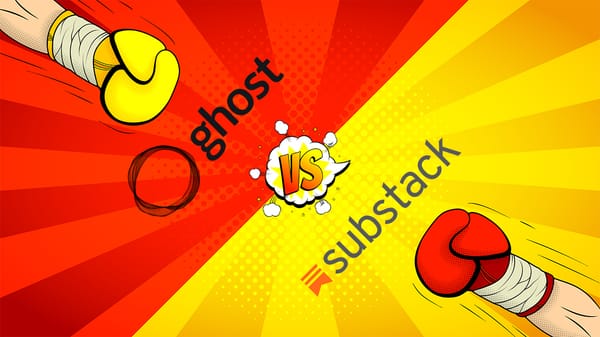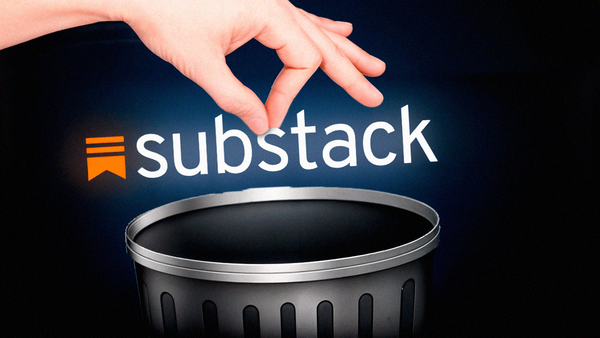Substack vs Kit (previously ConvertKit): big differences for sending newsletters

Is choosing between Substack vs Kit causing you headaches?
Many creators start with Substack because it's free, and you can publish different types of content.
While Kit has a generous free plan and lower fees, making it appealing if newsletters are your main focus.
In this article, I'll help you decide the right tool for you and show everything you need to know.
Substack vs Kit Decision Quiz
The quiz below takes 2 minutes to complete and will help you find out whether Kit or Substack is better based on your needs.
At the end of the quiz, you'll see a score for each platform. A higher score means the platform is best suited for your needs.
Substack vs Kit summary
The main difference is that Kit is better for newsletters with better customization and monetization. Substack is better for publishing different types of content (newsletter, blog, and podcast) in the same place with a free forever plan.
Kit is my recommendation for the creators in the following situations:
- Monetize content via membership or ads;
- Already have a site using another platform and want a great newsletter tool;
- A tool that is great for beginners and professionals.
On the other hand, I recommend Substack in these scenarios:
- Publish different types of content on the same platform;
- A free forever plan;
- You give more importance to the tool being simple to use than being customizable.
Kit overview
Kit is one of the best alternatives to Substack and one of the best newsletter services on the market.
It was created in 2013, and Kit focused on being THE email service for creatives.
As you will see, they have all the tools to run a personal newsletter, monetizing it and earn a full-time income.
Kit's strengths:
- Free plan (up to 1,000 subscribers);
- Automated email sequences;
- Integrations (example, Zapier);
- Great Monetization (newsletter memberships, digital products, newsletter ads and more);
- Low fees (0,6% + payment processing fees);
- Analytics tools (including click tracking and subscriber engagement score);
- Email segmentation (send emails based on tags);
- Landing pages and form builder;
- Newsletter referral program.
Kit's limitations:
- The landing page is somewhat limited;
- You need a standalone website to get discovered and grow the newsletter because Kit doesn't have a hybrid model with a blog included;
- Lack of importing/export posts;
- Finding members that canceled subscriptions can be tricky.
Substack overview
Substack is a publishing platform for newsletters and blogs, with some podcast and social media capabilities called Notes. Created in 2017, Substack became popular by making it easy for writers to monetize their content via memberships.
Substack is free to use with a revenue-sharing model where they take 10% of membership earnings, which is perfect for hobby writers and beginners.
Since its launch, Substack has attracted numerous journalists, authors, and thought leaders who value its super simple interface and direct relationship with readers.
Things I like about Substack:
- Free forever plan;
- Do everything without code;
- Good safety record;
- Publish different types of content (newsletter, blog, podcast, and more);
- Easy to use.
Things I don't like about Substack:
- 10% in membership fees;
- Bad SEO;
- Custom domain costs $50;
- No integrations;
- No email sequences;
- Awful customization;
- Complicated content guidelines (you have to follow their rules or risk getting banned).
Creating and writing
Now, I'll explore the process of creating content with each tool.
Content creation experience on Kit
The writing experience in Kit is pretty good.
The editor looks clean: with the content on the left and settings on the right (to customize font size, colors, etc.).
When you start creating a newsletter, you can start with a blank page or use one of the templates available, which makes the newsletter prettier and saves time with formatting.
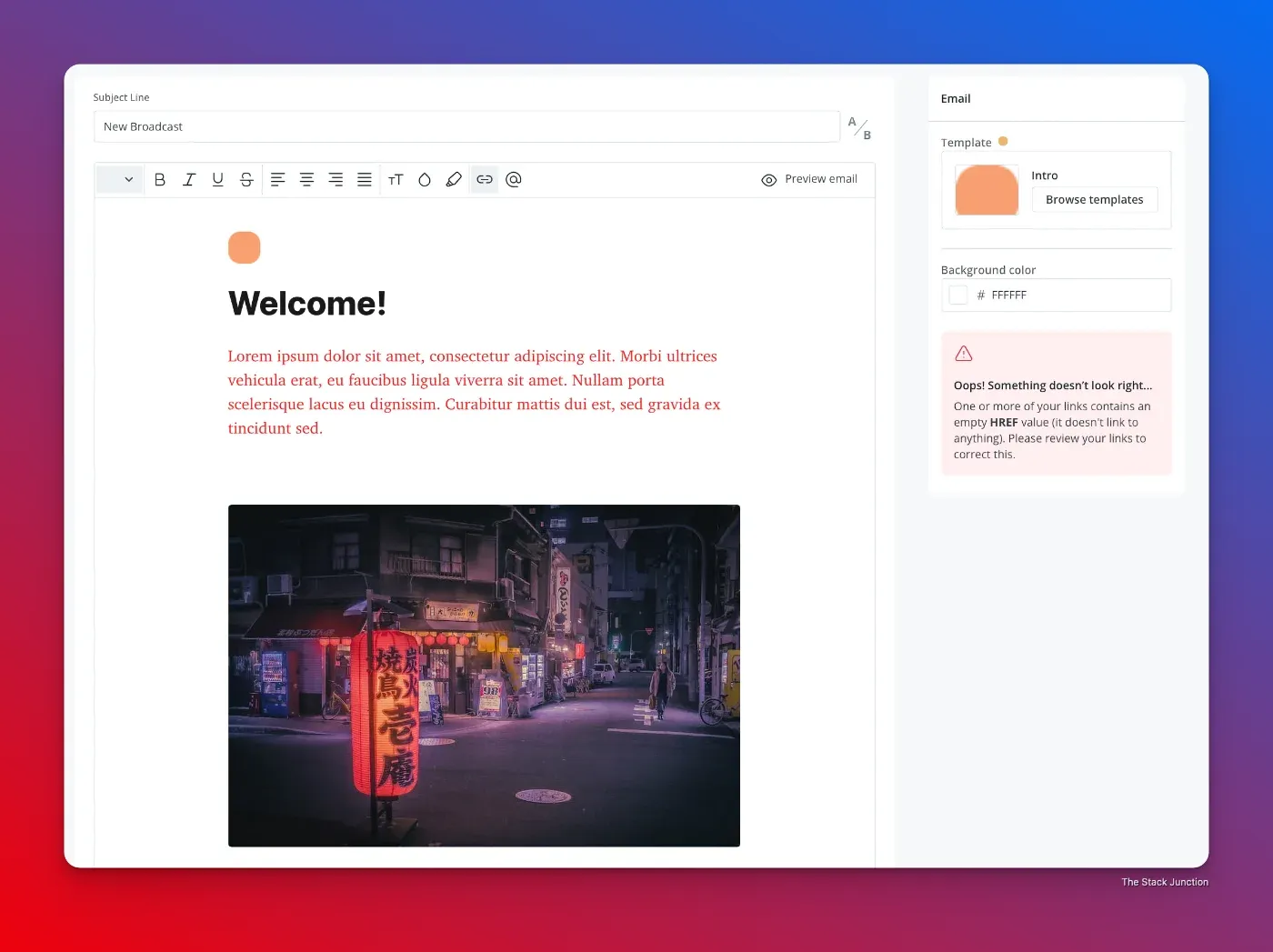
But better than an editor that looks clean is one that works well and doesn’t limit you from creating content. So, let me tell you that you are in good hands with Kit.
Here are some of the main content blocks you can find on the editor:
- Text formatting;
- Files;
- Layouts;
- Products;
- Countdown times;
- HTML blocks.
If I have to point out a weakness here, I’ll mention that the HTML block doesn’t always work as intended, and I'm not sure it's my fault (but it could be).
Content creation experience on Substack
Content creation on Substack is simple yet limiting.
The editor has a minimalist layout with few settings at the top and nothing else on the way.
This makes it pleasant to look at and won't distract you when writing.
This is a dream for beginners because it's easy to learn and use. But frustrating for advanced users.
For example, adding custom HTML on Substack is a pain and can only be done with Google Tag Manager.
This isn't optimal from a privacy perspective and is too complicated for a thing that should be available by default.
For me, this is a big turn-off about Substack.
As a creator, I need the ability to add custom HTML, CSS, and inject JavaScript into some of my posts. I need these things for embedding forms, making tables, and writing code for sponsored tags.
Other important things missing on Substack are:
- Exclusive email content;
- Content toggles;
- Saving content as reusable blocks.
Substack also allows the creation of content with Notes (their Twitter-like social feature) and podcast publishing.
Content Creation Category winner
Kit is better than Substack for content creation.
The editor is more complete, which gives you more freedom to create custom layouts and embed code on the page.
This is a massive advantage if you want to go beyond just putting text and simple images on the page.
But on the other side, I have to give props to Substack because they allow you to create a podcast on their tool. They and are becoming more of an all-in-one tool for publishing than "just" a tool for newsletters. But I think all-in-one tools aren't always better.
Customization
Next comes customization and design.
Customization on Kit
Kit's customization summary:
- Newsletter templates: Yes;
- Newsletter customization options: Yes;
- Website themes: Yes;
- Possibility to buy a theme from a 3rd-party or create one with a custom code: Yes, from Palladio.
When it comes to customization, Kit is great!
Kit allows customizing almost everything on the newsletter side. For example, you can tinker with font colors, backgrounds, the styles of the buttons, and a lot more.
CK also makes customizing landing pages and forms really easy.
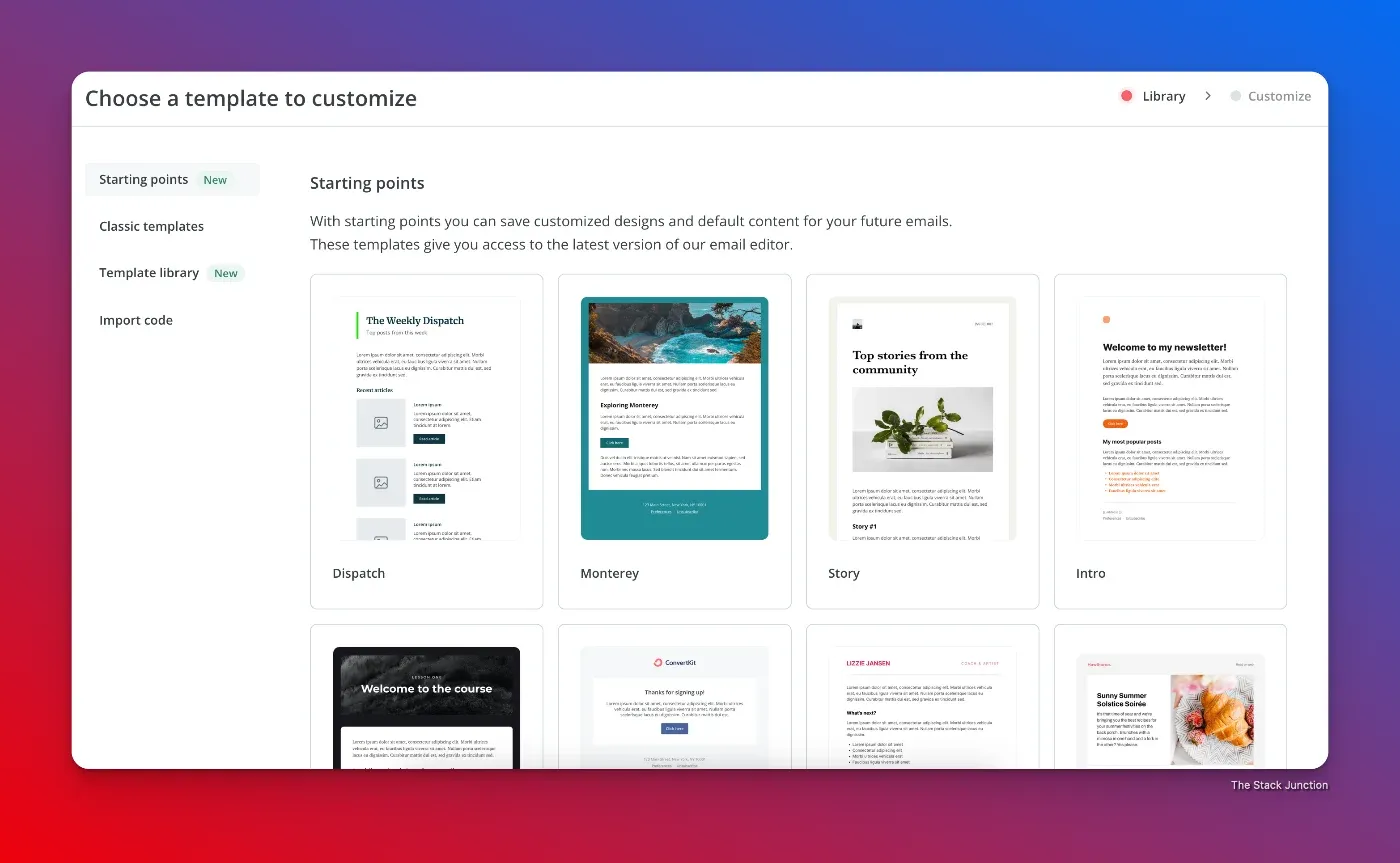
On top of that, CK has many design options for newsletters, landing pages, and forms. This can save you hours with Kit’s templates or simply get inspired by them.
And if all these aren’t wow enough, Kit also has content snippets which are blocks of content that you can reuse in different places, speeding up your content creation process.
With Kit, it’s possible to express yourself with ease and make your newsletter pretty without much effort.
Customization on Substack
Substack's customization summary:
- Newsletter templates: No;
- Newsletter customization options: Basically none;
- Website themes: Yes, but very limited;
- Possibility to buy a theme from a 3rd-party or create one with a custom code: Only the Tripoli theme from Aspire Themes is available.
Substack's customization is extremely limited for both newsletters and websites.
You can only change basic things like fonts and colors.
Regarding layouts, there are only a handful of options. And you won't have complete control over them or advanced options.
This makes it hard to build a recognizable brand because everyone looks the same.
That's boring!
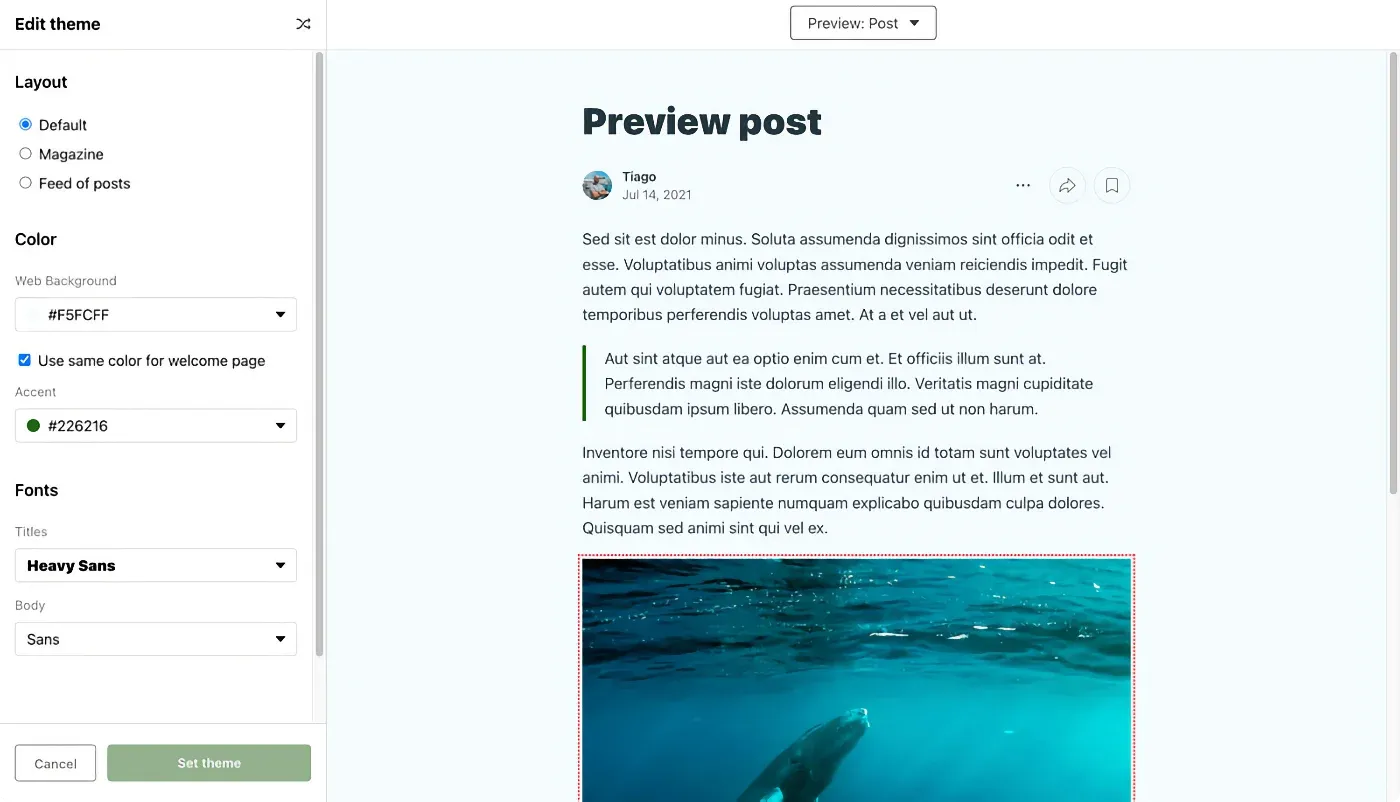
Newsletter customization is even more restrictive.
So, you can't buy or build custom themes for Substack.
To make things worse, you can't remove Substack's branding from your emails, either.
While this simplicity makes Substack easy to use, it significantly limits creators' freedom.
Customization category winner
Kit is much better than Substack regarding customization!
And it's not even close.
Kit has lots of templates you can pick from to create a beautiful newsletter. To make things better, you can tweak the templates to make them unique.
You can also buy Palladio for even more Kit email templates.
Whereas, on Substack you can only customize the very basic stuff.
100% go with Kit if customization is essential for you.
Pricing
Now comes the cost of each tool.
Kit pricing
Kit pricing summary:
- Free plan: Yes;
- Cheaper paid plan: $9/month for 300 subscribers.
Pricing is one of the downsides of Kit, as their prices go up faster than some other alternatives like beehiiv or MailerLite.
Their pricing works in tiers: the more subscribers you get, the more you get billed.
However, Kit has a free plan of up to 1,000 subscribers.

In general, this pricing strategy is helpful for beginners because it allows them to pay a small fee for the tool when starting.
But as your following grows, so will your bill.
Paid plans start at $9/ month for 300 subscribers and grow until it becomes quite expensive.
To put it into perspective, Kit’s prices escalate more than other competitors with better blogging capabilities.
Yes, blogging isn’t really the heart and soul of Kit. And they're great at it but are making a lot of effort to improve.
Substack's pricing
Substack pricing summary:
- Free plan: Yes, Substack has free forever plan;
- Cheaper paid plan: 10% of the revenue charged via memberships;
Substack has a free forever plan with a revenue-sharing model. Instead of charging a subscription fee, Substack takes 10% of your membership revenue (plus Stripe payment processing fees).
This model is good for beginners and hobby writers since you can use Substack without spending money.
Actually, many use Substack this way.
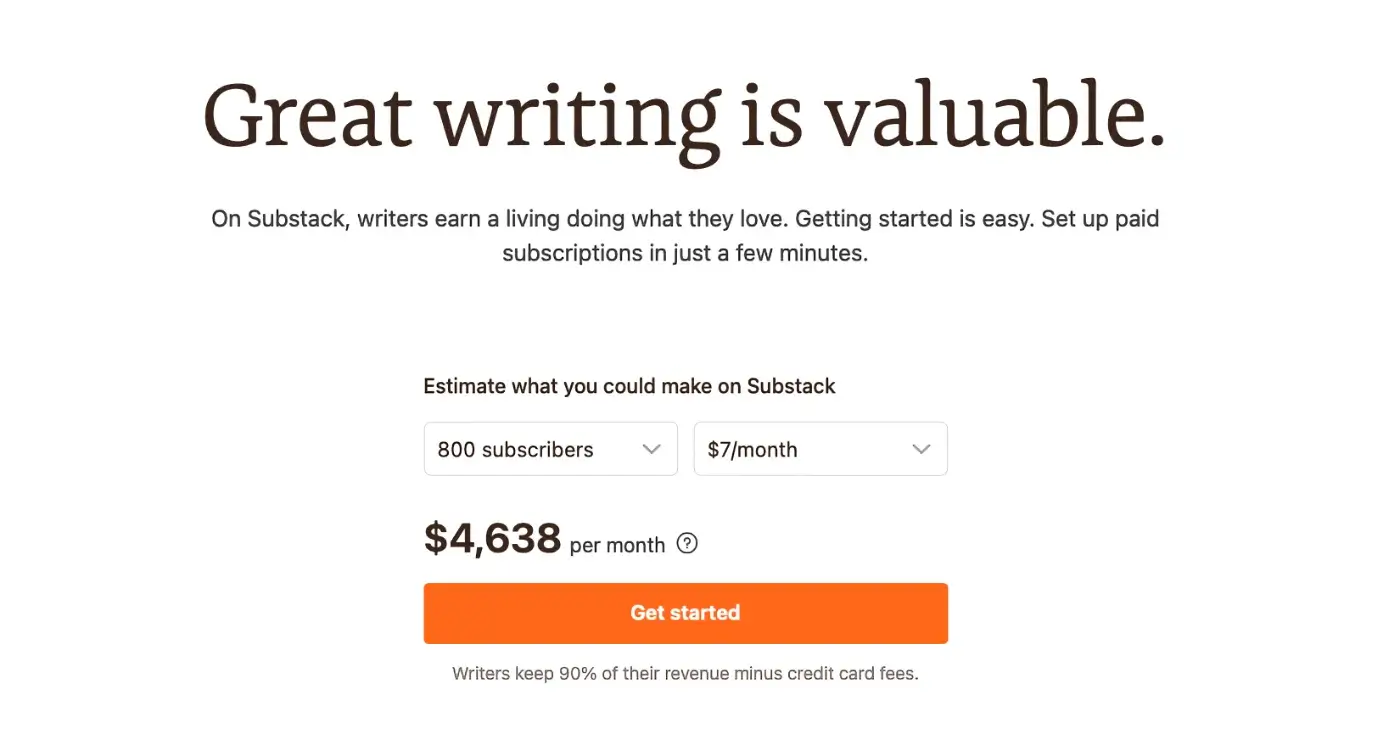
But this model is problematic, which makes creators look for cheaper Substack alternatives.
Yes, you can use Substack for free if you don't charge memberships.
However, the 10% fee becomes expensive when your subscriber base grows.
Imagine readers pay you $50 per year. This is how much Substack keeps:
| Number of subscribers | Your revenue | Substack's fees |
|---|---|---|
| 100 subscribers | $4,500 | $500 |
| 500 subscribers | $22,500 | $2,500 |
| 1,000 subscribers | $45,000 | $5,000 |
| 5,000 subscribers | $225,000 | $25,000 |
I consider these fees outrageous!
I know it's normal for platforms to have usage-based pricing, but Substack goes from being lenient with their forever-free plan to taxing the success of their writers without offering too much in return. And, you should consider if it makes sense to pay these fees.
Pricing category winner
It's hard to tell if Kit or Substack has better pricing as they are opposites.
Substack is free forever with a revenue-sharing model. This means you can use Substack for free and only need to pay if you charge memberships.
When you do, Substack will retain 10% of the revenue. Flat!
Your bill will depend on how much you earn.
Yet, for anyone with a few thousand subscribers, Kit will be much, much cheaper!
So, Substack is cheaper for beginners and hobby projects.
While Kit is cheaper for people looking at their newsletter as a business or potential business.
Monetization
Now, I'll analyze the options to make money with each platform.
Monetization options on Kit
Monetization options on Kit:
- Memberships: Yes;
- Display ads (Programmatic advertisement): No;
- Digital products: Yes;
- Sponsorships/ Marketplace ads: Yes;
- Donations/ Tips: Yes;
- Manual embed ads on content: Yes;
- Affiliate marketing: Yes.
The “Earn” tab in Kit reveals all the ways you can monetize your content: paid newsletter, selling digital products, and sponsorships (via Kit Sponsor Network, aka CKSN).
Most creators make the bulk of their revenue via paid subscriptions and sponsorships.
Kit allows you to maximize earnings because you can easily create a paid newsletter. And if you are approved to the Sponsor Network, you’ll have an easy path to finding sponsors.

On top of that, Kit also allows you to sell digital products. Apart from newsletters, you can also use Kit to sell e-books, and coaching/consultations, just to name a few ideas.
Monetization options on Substack
Monetization options on Substack:
- Paid memberships: Yes
- Sponsorships/ Marketplace ads: No;
- Display ads: No;
- e-Commerce / Digital products: No;
- Donations/ Tips: No;
- Manual embed ads on content: Yes;
- Affiliate marketing: Yes.
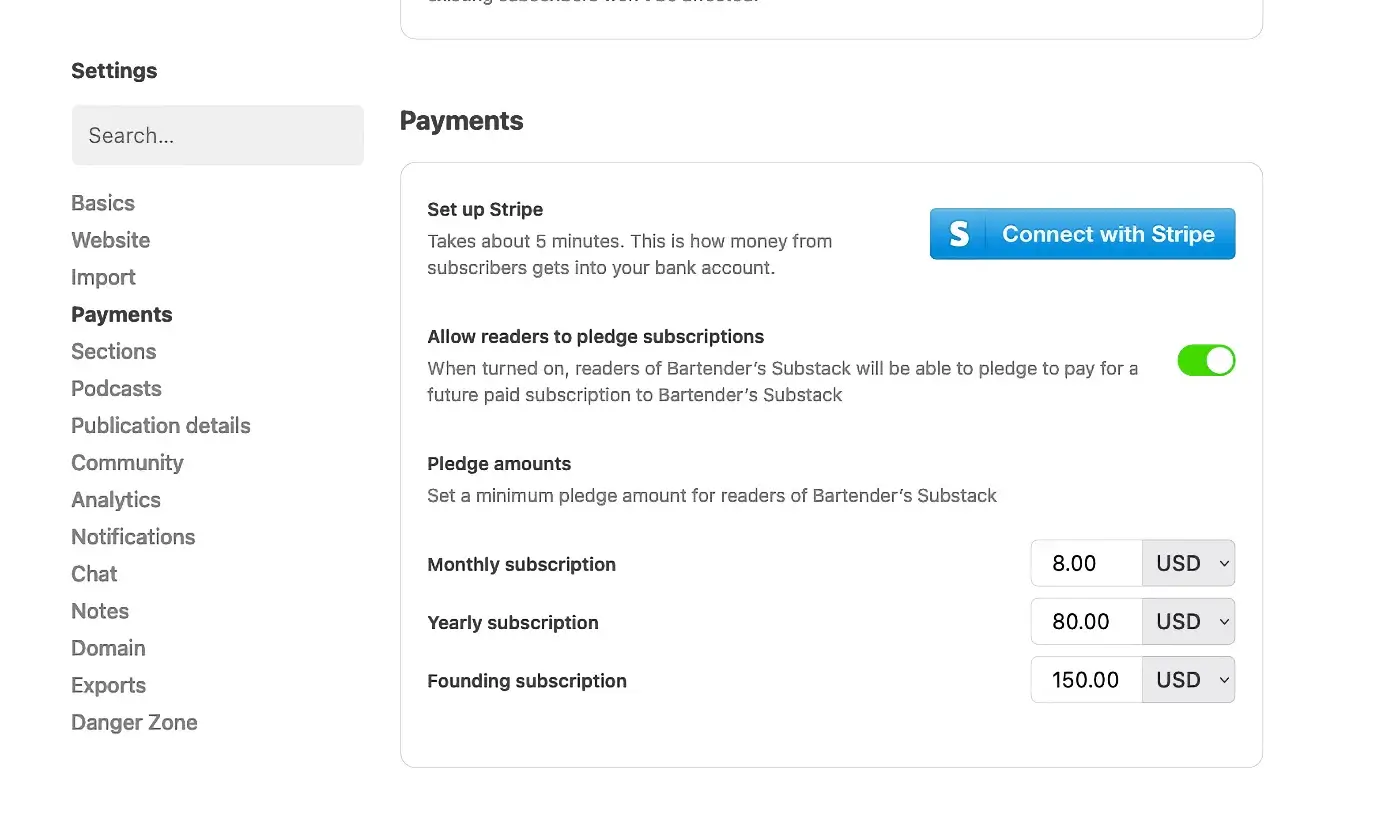
Substack has paid memberships as the main way to monetize content. But when a creator charges for access, Substack takes a 10% cut (plus payment processing fees).
While Substack focuses on memberships, creators have found ways to earn through alternative methods. Many writers manually embed sponsored content in their posts. However, this comes with limitations, as Substack lacks tools to properly tag sponsored links, which can be problematic for SEO purposes.
Substack's monetization options are quite restricted compared to other platforms, as it doesn't support display ads or even paid recommendations.
This narrow focus on memberships means creators must rely heavily on memberships.
Monetization category winner
Kit is the winner in monetization as they have more and better ways for you to earn money from your newsletter.
On Kit you can sell digital products, a membership, or even join the Kit Sponsor Network to earn money from ads.
Also, because of Substack content guidelines, you can be punished if you try to sell something outside and platform. This has a low probability of happening, but I've seen it!
SEO
Let's see how they compare when it comes to SEO.
Kit's SEO
Important SEO features checklist for Kit:
- Custom domain: Yes;
- HTTPS: Yes;
- URL slug customization: No;
- Meta description: No;
- Sitemap: No;
- Canonical tags: No;
- Redirects: No;
- Robots.txt: No;
- Website speed: Good;
SEO isn’t exactly Kit’s strongest suit.
Kit was (and is) mostly a newsletter tool. And for many years, it never had blogging capabilities.
As I write this, Kit is below average when it comes to blogging.
Their creator profiles are more like a Link-in-bio tool than a blogging option.
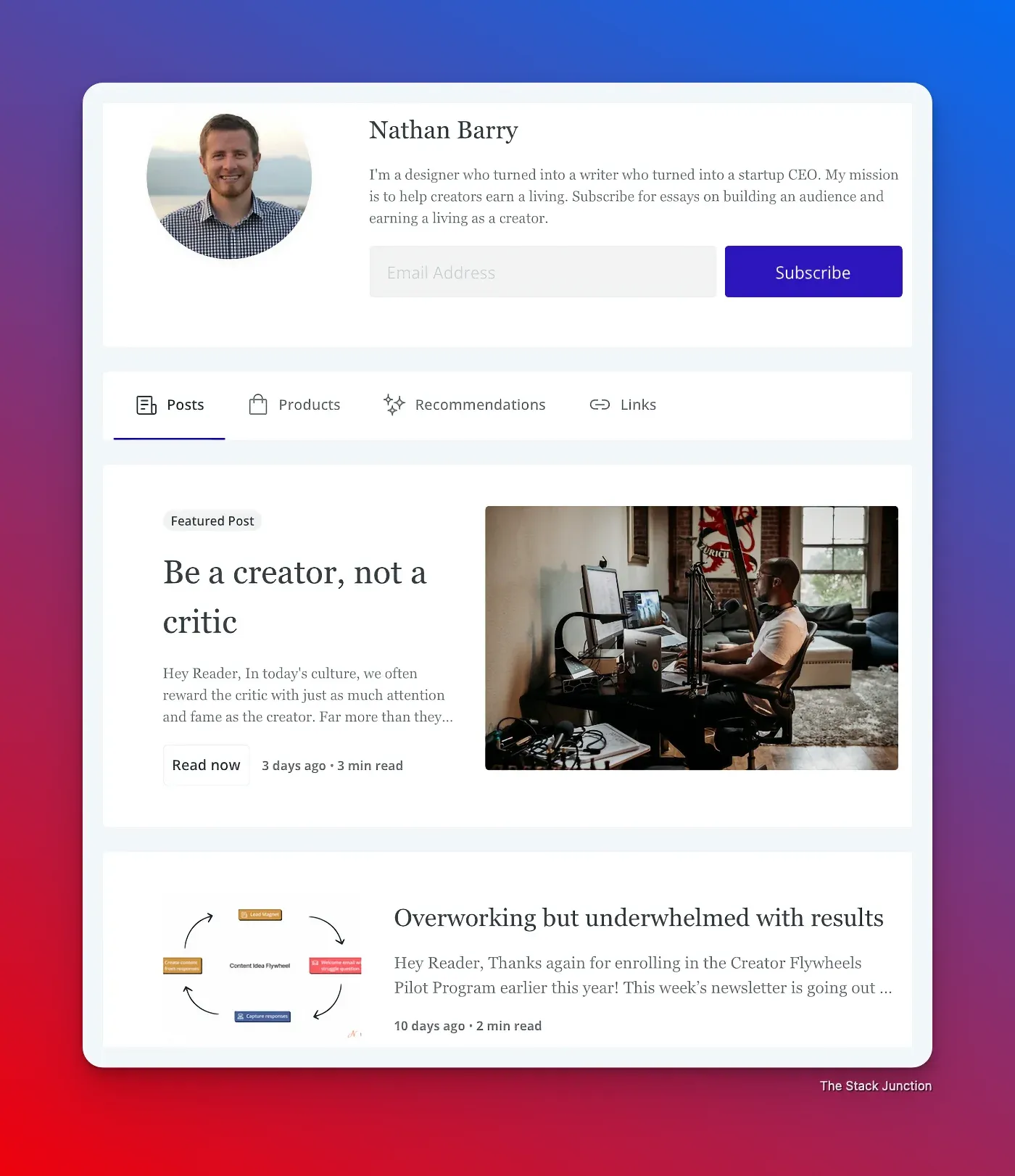
There are a lot of things missing with the creator profiles on Kit for them to be a valid alternative to Ghost or WordPress.
I don't know if Kit will ever become a great blogging tool with strong SEO. So, I recommend using Kit paired with another blogging tool for the best SEO results.
Substack's SEO
Important SEO features checklist for Substack:
- Custom domain: Yes;
- HTTPS: Yes;
- URL slug customization: Yes;
- Meta description: Yes;
- Sitemap: Yes;
- Canonical tags: Yes;
- Redirects: No;
- Robots.txt: Yes;
- Website speed: Yes, website speed is good;
Substack's SEO looks decent on paper but, in practice, performs poorly.
The platform has important features like custom meta descriptions, XML sitemaps, and schema markup. But the biggest issue is that Substack publications struggle to rank well in search engines.
Writers have complained about this limitation since 2021, with minimal improvements from Substack to address the problem. Casey Newton even said that "the only way a Substack grows is through tweets. I am like 85% serious when I say this".
Substack also lacks the necessary technical SEO capabilities that advanced users need. Users cannot create redirects, customize canonical tags, or control noindex settings for individual posts. The redirects part is a big, big problem!
To show how bad is Substack's SEO, I have a question for you:
Have you seen a Substack publication on Google results without using the word "Substack" in the search? Me neither.
Substack also charges $50 to enable custom domains, which I don't appreciate (but at least the feature exists).
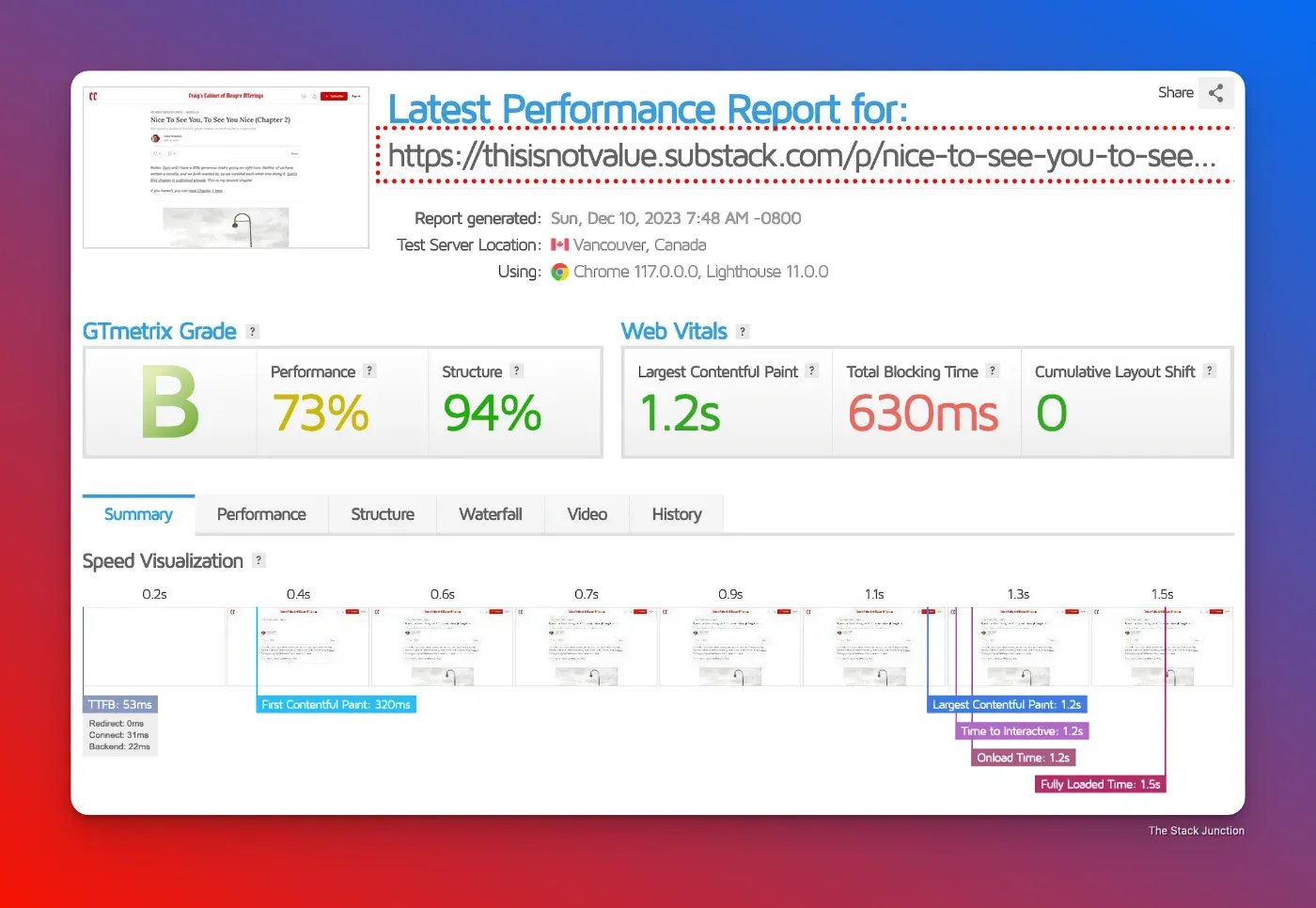
SEO Category winner
Substack is better for SEO than Kit because it has key features like the ability to customize URLs, add meta descriptions, and XML sitemaps.
However, even with these things, Substack users still struggle to get any success from search engines.
This suggests that Substack's SEO isn't as effective in practice as it is in theory, making it hard for Substack publications to be found without people directly searching for them.
So, Substack is better than Kit, but it is nothing worth praising.
Growing tools
To finish, let's look at the tools to help grow.
Kit growing tools
Kit most important Growth tools checklist:
- Plugins/integrations: Yes;
- Automated email sequences: Yes;
- Referral program: Yes;
- Subscriber segmentation: Yes;
- Custom sending domain: Yes;
- A/B testing (titles): Yes;
- RSS feed: Yes;
Kit has fantastic tools to help newsletters grow!
From integrations with blogging tools; to having email automation to help make more money; or simply testing different newsletter titles to improve the open rate, Kit has them all.
That's a lot!
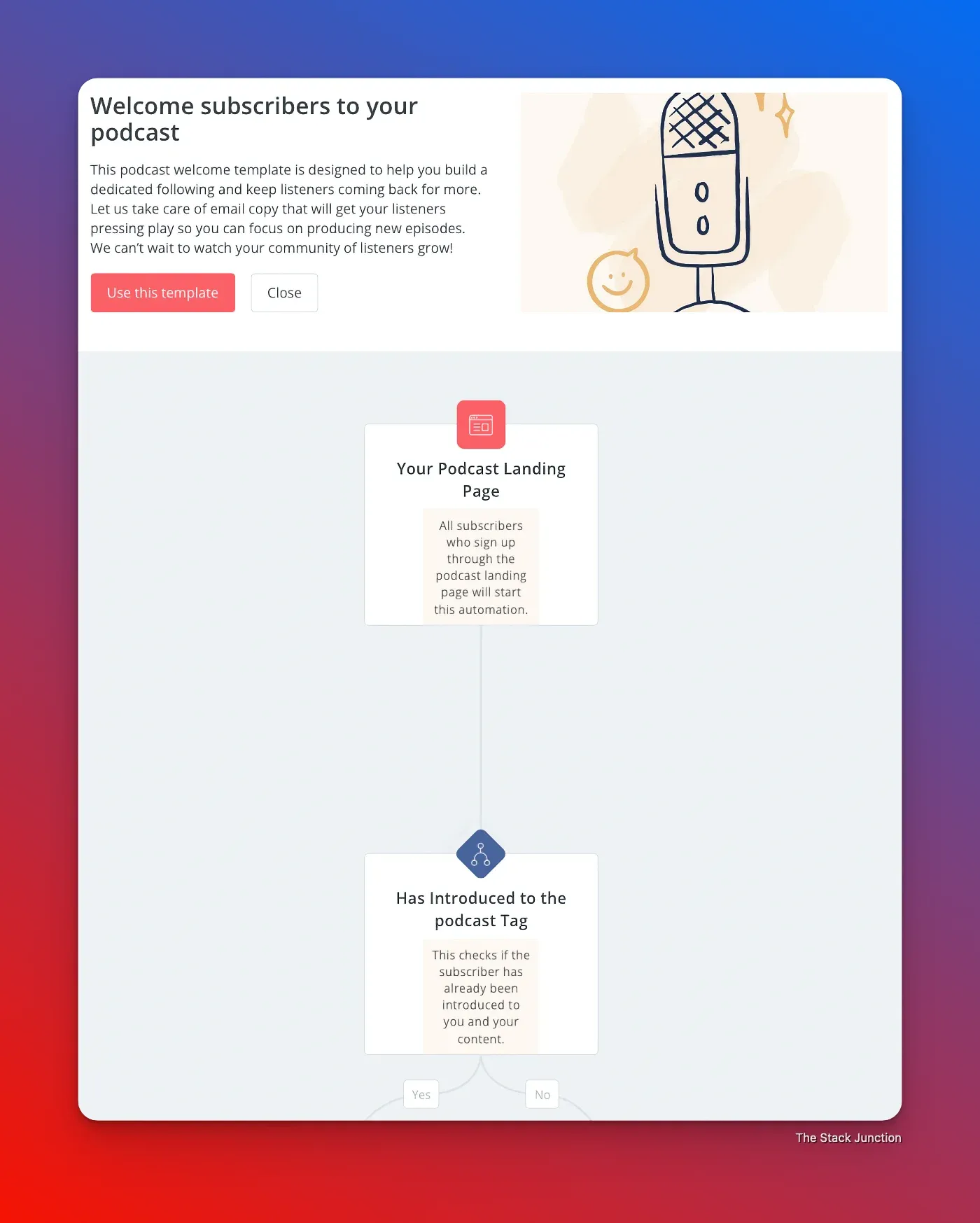
When I tell you Kit is really for newsletter growth, I'm serious.
You can also use Kit to create subscription forms to put on other websites. This will also help grow the newsletter by earning subscribers from a blog.
Kit even integrates with SparkLoop, which allows you to create a referral program for your own newsletter.
For those reasons, Kit gets a great score in this category.
Substack's growing tools
Substack's most important Growth tools checklist:
- Plugins/integrations: No;
- Automated email sequences: No;
- Referral program: No;
- Subscriber segmentation: Limited (only segments between free and paid);
- Custom sending domain: No;
- A/B testing (titles): No;
- RSS feed: Yes;
Growing a Substack publication has been the biggest problem since forever.
Where do I even start...
The platform doesn't have email automation, A/B testing for titles, and subscriber segmentation is very limited.
To counter these flaws, Substack developed its internal Discovery tool and its Twitter-clone called Notes.
This move towards a more social approach makes Substack a unique tool. It also increases the power of their network as more writers use Notes.
In 2022, Substack also released newsletter recommendations. This lets one writer recommend another newsletter to its subscribers.
While this creates network effects where creators can help each other grow, it's one of the few growth features available.
Growth Category winner
Kit outshines Substack in the Growth category because it's full of features for growing your newsletter.
Some key advantages include automated email sequences and a variety of integrations that let you connect with blogging platforms and other tools.
Kit also has A/B testing for titles, helping you improve the chances of people opening your emails.
Plus, there's a referral program to encourage readers to share your newsletter.
I mean it when I say, Kit is stacked and will help you grow the newsletter.
Final Thoughts
This comparison showed that Kit and Substack are very different tools.
My analysis considers Kit to be much better for creators who want more freedom to customize their newsletter and more advanced tools like email automation.
Kit is also better when it comes to monetization, as it gives you more options to make money with lower fees. These are things Pro users want and need, so Kit will be better for you if you are in this group of creators.
On the other side, Substack is so easy to use and allows creators to publish different types of content without having any technical knowledge.
This ease of use and the forever free plan are the biggest reasons to use Substack over any other newsletter tool. Because who doesn't like a free tool!?
Yet, as I have said, this ease of use comes with some caveats, so be wary of them.
If you want to use the simplest tool, treat your content as a hobby, or publish in a 'community' style app, Substack is the better option for you.
For creators with an existing blog and who want one of the best newsletter tools available, Kit is the right decision over Substack.




